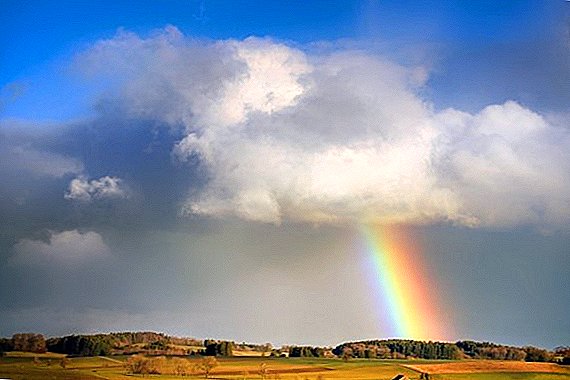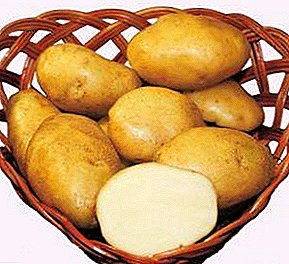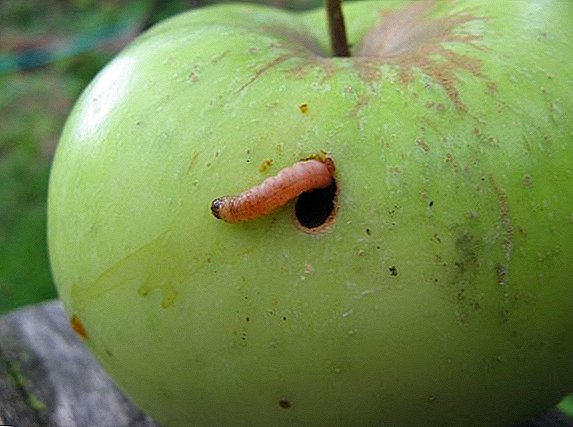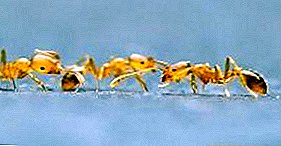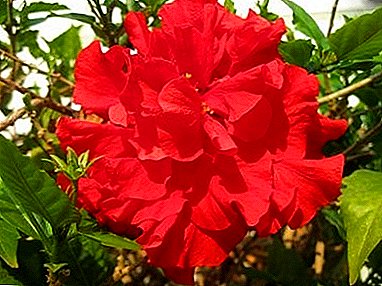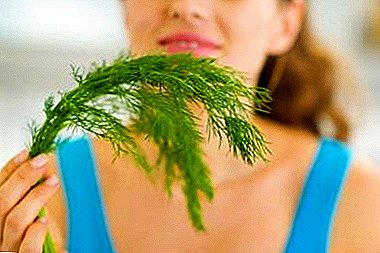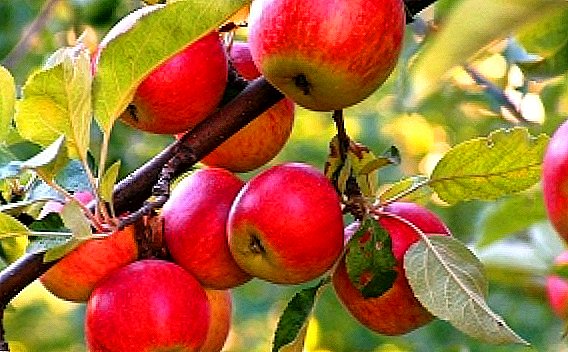
Apples are considered one of the most popular fruits, they are loved by both children and adults. To taste, they are sweet, sour-sweet, tart, hard and soft, it all depends on the variety.
Jam and jam are made from apples, compotes, fruit drinks, juice, marmalade and vinegar are made, as well, they can be eaten in the form of drying and raw.
They are sold all year round in stores and markets. Apples, depending on ripening time, are stored for a very long time. Apple tree grows in almost every garden. And now you will learn how to grow an apple tree.
Which apple tree to choose (advantages, disadvantages)
There are many kinds of apple trees. When choosing an apple tree, we have a lot of questions: what should we pay attention to when choosing varieties, which saplings to choose - tall, dwarf or columnar, and when can we collect fruit?
Selection of varieties of apple. Be sure to pay attention to resistance to pests. Also, it is necessary to choose the apple trees, giving the greatest yield, with high taste, you should pay attention to the duration of storage of fruits.
Choose apples of different ripening terms
In the garden must grow apple trees of different ripening periods, preferably 3-4 varieties. The best summer varieties can be called: melba (tasty fruits with dense flesh, yellow-green tint, stored for quite a long time, not afraid of pests); white filling (apples are green-yellow in color, yield is above average, they have good cold resistance); Borovka, breading, mantet are also popular.
By the autumn varieties include Zhiguli variety, charger, delight, Vanger's daughter, glory to the winners.
It is not recommended to plant in the garden such varieties of apple trees as Akayevskaya beauty, scarlet anise and borovinka. They give a bad harvest, and not very tasty.
The best winter varieties that should grow in the country are such varieties as Antonovka, Golden Delicious (sweet, juicy, yellow fruit, trees give high yields), Mutsu, Ruby, Bohemia, Eliza and Pinova.
The most crucial step is the selection of apple seedlings
Seedlings need to buy from a professional breeder, and then, at least instead of the summer variety, you buy a winter one. Special attention should be paid to the root system. Depending on the size of the garden area, you should select the types of trees that will grow in you. Each type of seedlings has its pros and cons.
The advantages of tall saplings include: trees bear fruit throughout their entire life cycle, and it is rather long; the root system is located under the top of the soil and does not require frequent watering; easily tolerate any weather conditions.
The disadvantages include: not suitable for small areas; groundwater should be as low as possible (minimum 2 m.); it is inconvenient to pick apples on the upper branches, because of the excessive height it is difficult to reach them.
Also, due to the fact that the tree gives too much shade, the free space between the rows cannot be used for planting other plants.
The advantages of bonsai are: they start to bear fruit early, occupy small areas of the garden, they are not as shady as tall apple trees, and you can grow flowers or vegetables in rows. Apples are often large in size and very tasty. The disadvantages of this type are: they are non-frost-resistant, require more care, especially irrigation, do not like drastic weather changes. A tree in 10 years begins to bear less fruit, their life cycle ends.
Celled apple trees have a superficial root system, after a couple of years they give their first crop, they are easy to care for, they are not capricious. The disadvantages of this type are: fear of frost, require proper and timely watering, do not tolerate weather fluctuations, have a short life cycle.
We turn to the preparation of the soil
The soil, before planting trees, you need to dig, loosen, get rid of all the harmful weeds, fertilize and dig again. Leave it in this condition for several months, then proceed to digging the landing pits.
The main thing - the right hole

The preparation of the planting pit is the most important stage, which begins long before the planting of seedlings. After all, the planting pit for a sapling will serve as a “home” for 5 or 6 years, it is a source of nutrients.
The pit begins to dig about 2 months before the start of planting.
Agronomists advise to pay attention to the depth of the pit, it should be two times deeper than the height of the future tree, and the width is about the same as the depth.
During the digging of the pit, it is necessary to remove all the roots of weeds, the bottom necessarily loosens. The excavated earth from the pit is mixed with manure or humus (2-3 buckets), and ash, mineral fertilizer, lime or chalk are added.
The top layer of fertile land, which was previously placed in the bag, is sent to the very bottom of the pit, and the bottom layer is poured up. Planted seedlings should be covered with 20 cm of soil. This is done to ensure that the root system does not undergo frost and the apple tree rejoices with its excellent yields.
Also, do not forget about fertilizer
The soil under which the apple trees will grow needs proper fertilizer. In the ground, after loosening, small ditches are made, and nutrients are brought in there: humus (manure), bird droppings, copper sulphate or boric acid, as well as other trace elements.
Now you can start landing
What are the dates of planting in the fall, in the spring?
The period of planting seedlings depends on the variety and climate in the area. It is possible to plant apple trees in the fall, when all the leaves from the trees fall off, or in the spring, after the snow melts. There are pros and cons of landing in these seasons.
It is best to plant the apple trees in the spring, but you need to do this only after the air and the soil have warmed up. Indeed, the cold, not thawed after the winter frosts of the earth, has a detrimental effect on the roots of seedlings. Experienced gardeners are advised to start planting trees since mid-April.
Planting apple seedlings in the fall is recommended around the end of September or mid-October. This period is considered the rainy season, the land is still warm, which is the best condition for planting. In November, it is not recommended to plant small trees, they are best prikopat and leave until spring.
How deep to plant?

The depth of planting an apple tree is directly dependent on the roots of the seedlings. The root system must feel free. The approximate width is about 2 meters, and the depth of the pit should reach 100 cm.
Proper care is the key to a good harvest.
Do I need to fertilize?
In the first year, fertilizers are practically not applied, just need timely watering. Be sure to remove weeds, loosen the soil. During the first three years, nitrogen fertilizers are applied to the earth, this is done twice a year - in spring and autumn.
For seedlings that are a couple of years old, fertilizers are applied to tree trunks, and for those apple trees that are already bearing fruit, between the rows.
Apple care in the fall
In the autumn period, apple trees are fed with fertilizer containing potassium, nitrogen and complex fertilizer (nitrophoska, ammophos). It is recommended to spray, before the start of the introduction of useful substances, copper sulphate. This will protect the trees from fruit rot. Top dressing of apple trees is carried out by urea, saltpeter, ammonium sulfate. The lack of potassium in the earth affects the fruits, their size and color. Lack of nitrogen fertilizer is manifested in the state of apple roots.
It is necessary to apply fertilizer after the work done: pruning trees, digging the garden, mulching the soil.
In the spring, apple trees need spraying - this allows you to increase the yield of trees. For spraying using boron, copper, magnesium. In early summer, foliar feeding of seedlings (potassium sulfate and urea) is carried out. The main rule remains - to finish the work on feeding about 20 days before the start of fruit ripening and harvesting.
Ways and time of watering
Any apple tree needs timely watering, especially young trees. They are watered about 5 times from spring to autumn. On one tree poured about three buckets of water.
Apple trees that grow not the first year should be watered three times. The first time watered when the apple trees bloom. But this is done only when the spring is hot and not rainy. The second time watered when the ovary and small apples begin to form. It is then that the apple tree requires additional moisture. The last, final watering is done when the fruit reaches medium size.
There are several ways to irrigate apple trees - these are tree trunks, sprinkling, furrows, drip irrigation.
We protect our apple tree from pests
The apple tree has many pests, the main thing is to recognize them in time and start fighting them as soon as the first signs of damage appear.

Apple aphid infects the leaves of trees. In the fall, it lays eggs, and in the spring of them larvae are born. They feed on sap from the leaves. For the treatment of apple from harmful parasites, it is sprayed with extract of tobacco.
Also considered a dangerous red mite and brassica. In this case, trees are sprayed with preparations that contain phosphates and colloidal sulfur.
For fruit danger is the codling moth. She is debugging her eggs on apples and leaves. And the apple sawfly affects the fruit ovary. Apples do not have time to ripen, and fall green. Trees sprayed with special means.
To the pests of the trees themselves, apple trees, include:
- Medianitsa
- Moth. Control measures include spraying trees with benzophosphate, or karbofos.
- Apple aphid is manifested in the appearance of plaque on the leaves, branches. Methyl bromide is used for disinfection, and trees are sprayed with special preparations ("metaphos").
- Apple flower eater. Before budding, it is necessary to process the trees with chlorophos, karbofos.



